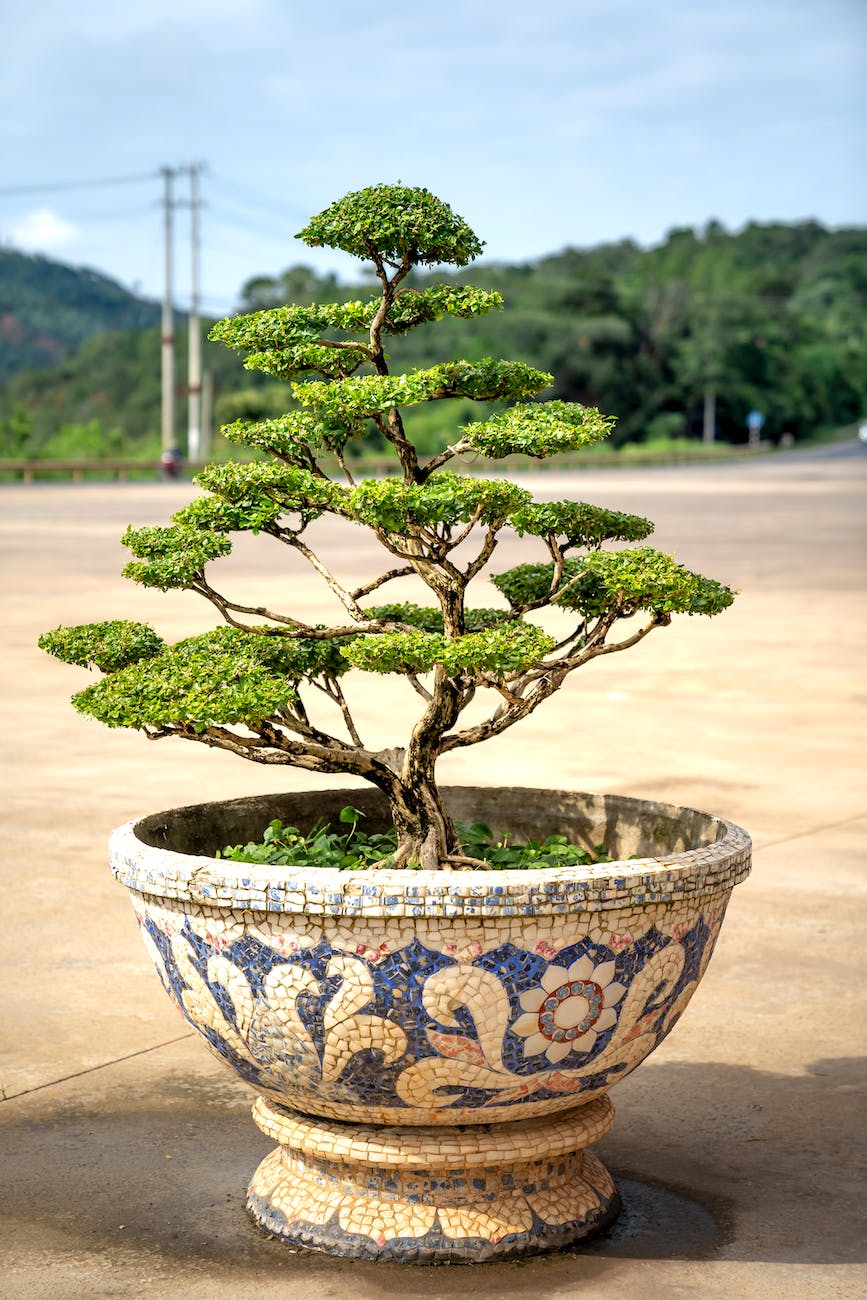The Artistic Elements of Bonsai: Incorporating Balance and Harmony in Your Trees
Bonsai, the art of creating and cultivating miniature trees, has deep roots in traditional Japanese culture and has captured the fascination of many bonsai enthusiasts worldwide. With its ability to capture the beauty of nature in a small and carefully crafted form, bonsai has become more than just a hobby – it is considered an art form in its own right.
What is Bonsai and Its Significance in the Art World?
The History and Origins of Bonsai
The art of bonsai dates back to ancient times, with its origins traced to China. It was later adopted and refined by the Japanese, who transformed it into a distinct art form. The term “bonsai” translates to “tray planting” in Japanese, illustrating the practice of cultivating small trees in containers. Bonsai trees are meticulously shaped and pruned to resemble the beauty and grandeur of full-sized trees in nature.
The Artistic Techniques Used in Bonsai
Bonsai cultivation involves a range of artistic techniques that enable the creation of these miniature masterpieces. Bonsai artists carefully select suitable tree species, such as the elegant maple tree, to work with. The artist then shapes the tree through various methods, including wiring, pruning, and manipulating the tree’s roots. The goal is to create a harmonious balance between the tree’s shape, size, and its container.
The Role of Bonsai in Japanese Culture
Bonsai holds a significant place in Japanese culture. It is deeply rooted in Zen philosophy, reflecting the appreciation of harmony, balance, and the beauty of imperfection. Bonsai is often seen as a symbol of patience, discipline, and the pursuit of inner peace. In Japan, bonsai trees are commonly displayed during festivals and tea ceremonies, where they evoke a sense of tranquility and contemplation.
Getting Started with Bonsai: A Beginner’s Guide
Choosing the Right Bonsai Tree
When starting your bonsai journey, it is important to choose the right tree species that suits your climate and personal preferences. Consider factors such as the tree’s growth habits, leaf size, and overall aesthetics. Researching and seeking guidance from experienced bonsai enthusiasts or nurseries can help you make an informed decision.
The Basics of Bonsai Cultivation
Cultivating a bonsai tree requires patience, dedication, and attention to detail. Bonsai trees require careful watering, proper fertilization, and regular pruning to ensure their health and growth. Understanding the specific needs of your chosen tree species is key to successful bonsai cultivation.
Tips for Proper Bonsai Care and Maintenance
Maintaining a healthy bonsai tree involves several essential aspects. Firstly, proper watering is crucial to prevent under or overhydration. Secondly, regular fertilization provides the necessary nutrients for the tree’s growth and vitality. Thirdly, pruning and shaping are important to maintain the desired form and size of the bonsai. Additionally, positioning the bonsai in the appropriate light and temperature conditions plays a significant role in its overall well-being.
Creating Your Own Bonsai Masterpiece: Techniques and Tips
Understanding the Principles of Bonsai Design
Creating a bonsai masterpiece starts with a solid understanding of the principles of bonsai design. Harmonizing the tree’s height, shape, and branches is crucial to achieve a visually pleasing composition. The use of negative space, known as “ma” in Japanese, helps create a sense of balance and tranquility in the overall design.
Shaping and Pruning Techniques for Bonsai Trees
The shaping and pruning of bonsai trees require meticulous attention to detail. Wiring is commonly used to guide the branches and trunk into the desired shape. Regular pruning helps maintain the tree’s aesthetics and encourages healthy growth. It is essential to strike the right balance between shaping the tree and respecting its natural growth patterns.
An Introduction to Bonsai Display: Showcasing Your Creation
Displaying a bonsai tree is just as important as its cultivation. Choosing the right container, displaying accessories, and incorporating appropriate elements such as rocks and moss contribute to the overall visual impact. The art of bonsai display, known as “ikebana,” is about creating a harmonious setting that complements the tree’s beauty.
The Development of Bonsai as an Art Form
The Evolution of Bonsai Styles and Traditions
Over the centuries, bonsai has evolved and developed various styles and traditions. From the formal and elegant “formal upright” style to the dramatic and windswept “literati” style, each style portrays a different aspect of natural beauty. These styles are not fixed but rather serve as guidelines for bonsai artists to express their creativity and interpretation.
Modern Innovations in Bonsai Artistry
The world of bonsai continues to evolve, with modern innovations pushing the boundaries of traditional techniques. Artists experiment with unique materials, such as synthetic bonsai soils and innovative containers, to create exciting and contemporary bonsai creations. These innovations reflect the adaptability of bonsai as an art form.
Bonsai as a Reflection of Natural Beauty
One of the captivating aspects of bonsai is its ability to reflect the beauty of nature on a miniature scale. By carefully crafting and nurturing a bonsai tree, the artist seeks to capture the essence and spirit of a full-sized tree and its surroundings. Bonsai can provide a profound connection to nature, even in urban environments.
In conclusion, bonsai is not just the cultivation of miniature trees; it is an art form that requires a deep appreciation for balance, harmony, and the beauty of imperfection. Whether you are a beginner or a seasoned bonsai artist, the world of bonsai offers endless possibilities for creativity and self-expression. Explore the captivating world of bonsai, shape the tree’s form, and let the natural beauty of these miniature trees inspire you.
